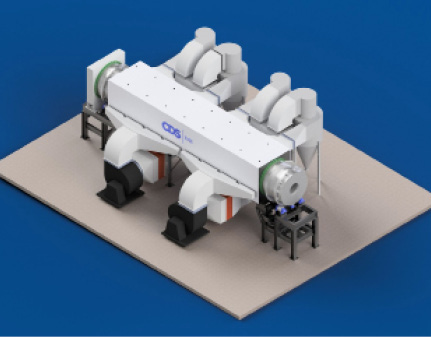A new service is enabling industrial operators to maximize energy efficiency and boost sustainability by identifying motor-driven equipment in their facilities with the best energy-saving potential. The ABB Ability Digital Powertrain Energy Appraisal service draws on data measured from fleets of digitally connected electric motors and variable frequency drives to show where and how much energy can be saved by…
Read MoreTag: energy efficiency
Building Energy Efficiency in Roofing and Walls
According to the Department of Energy (DOE) Office of Energy Efficiency and Renewable Energy, homes and commercial buildings consume 40 percent of the energy used in the United States. The average American spends at least $2,000 annually paying for energy, with about $200 to $400 of that bill going towards regulating temperatures caused by drafts, air leaks around openings and…
Read MoreEPA campaign targets commercial building energy efficiency
New U.S. Environmental Protection Agency initiatives will provide policymakers and commercial building owners resources to reduce emissions from more than 6 million commercial and multifamily buildings. Through decades of partnership with EPA’s Energy Star program, private and public building owners have significantly reduced their emissions and energy costs by improving their properties’ energy efficiency and performance. Many cities and states…
Read MoreEnergy Department, Meritage Homes probe walls’ thermal mass
Sources: Electric Power Research Institute, Palo Alto, Calif.; CP staff A $65 million Department of Energy (DOE) program will support technologies enabling energy-efficient homes or buildings to interact with one another and the electric grid, potentially lowering greenhouse gas emission levels and improving power infrastructure. Energy Secretary Dan Brouillette announced the funding commitment during an Electric Power Research Institute (EPRI)…
Read MoreEnergy Star cement mills log Btu savings by the trillions
Sources: Portland Cement Association, Skokie, Ill.; CP staff
Thirteen portland cement plants earned U.S. Environmental Protection Agency Energy Star Certification for 2019: Alamo Cement Co., San Antonio; Argos USA, Calera, Ala. and Harleyville, S.C.; Ash Grove Cement, Seattle; Buzzi Unicem USA, Festus, Mo. and Chattanooga, Tenn.; CalPortland Co., Rillito, Ariz.; Cemex USA, Brooksville and Miami, Fla.; GCC of America, Pueblo, Colo.; Salt River Materials, Clarkdale, Ariz.; plus, Titan America, Medley, Fla. and Troutville, Va.
Read MoreCouncil grades states on energy efficiency through building, vehicle metrics
As the federal government loosens environmental rules, states are investing more in energy efficiency and delivering increased power savings. Based on 32 metrics in six areas, including building and vehicle performance, the American Council for an Energy-Efficient Economy’s (ACEEE) 12th annual State Energy Efficiency Scorecard cites leaders California and Massachusetts; laggards North Dakota, West Virginia and Wyoming; and, states with the highest year-over-year improvements, notably New Jersey.
Read MoreEnergy efficiency council ranks building and vehicle leaders, laggards
Sources: American Council for an Energy-Efficient Economy, Washington, D.C.; CP staff
As the federal government loosens environmental rules, states are investing more in energy efficiency and delivering increased power savings. Based on 32 metrics in six areas, including building and vehicle performance, the American Council for an Energy-Efficient Economy’s (ACEEE) 12th annual State Energy Efficiency Scorecard cites leaders California and Massachusetts; laggards North Dakota, West Virginia and Wyoming; and, states with the highest year-over-year improvements, notably New Jersey.
Read MoreCDS elevates energy efficiency with steam-based aggregate drying method
Best known in manufactured-concrete production for its Envirocure technology, CDS has unveiled the R-O2 Drying System, whose reduced oxygen, superheated steam atmosphere serves as an energy-wise medium for bringing sand, gravel and stone moisture levels to zero.
Read MoreSteam-based aggregate drying brings energy efficiency to bagging lines
Sources: CDS Inc., Boonton, N.J.; CP staff
Best known in manufactured-concrete production for its Envirocure technology, CDS has unveiled the R-O2 Drying System, whose reduced oxygen, superheated steam atmosphere serves as an energy-wise medium for bringing sand, gravel and stone moisture levels to zero.
Read MoreCalPortland approaches $100M in Energy Star-rooted savings
Sources: CalPortland Co., Glendora, Calif.; Environmental Protection Agency; CP staff
A 1.1 percent energy intensity reduction across ready mixed concrete, cement and aggregate operations, totaling $682,000 in savings, has netted CalPortland the 2017 EPA Energy Star Partner of the Year – Sustained Excellence Award. Efficiencies attained in 2016 bring the West Coast producer to 15.6 percent energy intensity reduction and $96 million cumulative savings since 2003.
Read More

